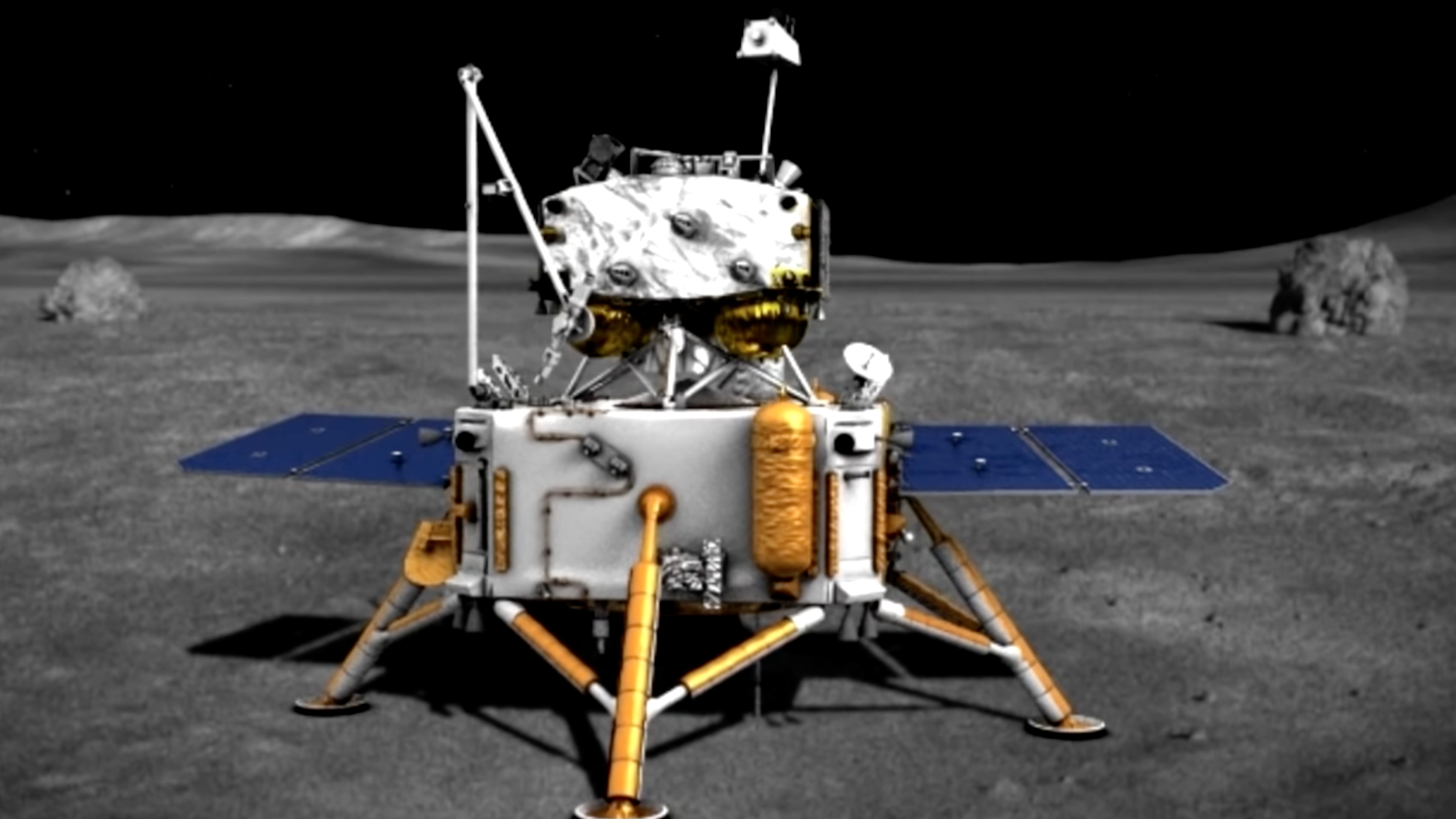China’s Chang’e 5 mission has successfully landed on the moon

China has just landed a new spacecraft on the surface of the moon. The mission, Chang’e 5, will collect lunar rocks and soil to bring back to Earth, as part of China’s first-ever sample return mission.
What happened: China launched Chang’e 5 on November 23. On Sunday, while in lunar orbit, Chang’e 5 separated into two parts: an orbiter and return capsule that would remain in lunar orbit, and a lander and ascent stage that would make its way to the surface a couple of days later.
At around 10:13 a.m. Eastern Time today, the lander successfully landed at a site close to Mons Rümker, a volcanic formation in the Oceanus Procellarum region on the western edge of the near side of the moon. This area is thought to be home to lunar rocks that are a couple of billion years younger than those the Apollo program brought back. Chang'e 5 is expected to begin drilling into the lunar ground for subsurface samples almost immediately.
Digging for moon rocks: Chang’e 5 will aim to scoop up at least four pounds of material from the moon. One-quarter will be from underground samples (about 6.5 feet deep), and the other three-quarters from surface material. Unlike its lunar rover predecessor, Chang’e 5 isn’t equipped with with any heating units to protect its more sensitive components from the frigid temperatures of the lunar night. That means the mission only has 14 days (the length of the lunar day) to properly gather samples before it freezes to death (figuratively speaking).
In about 48 hours, the ascent vehicle will ferry the lunar samples up for a rendezvous with the orbiter, which will then place the samples into the return capsule and head back to Earth several days later. Upon nearing Earth, the orbiter will jettison the return capsule, which should land in Inner Mongolia by December 17.
Making history: At this point, China is no stranger to lunar missions. The country has pulled off four successful robotic missions to the moon, including the delivery of two rovers to the surface. Chang'e 5 is the third lunar landing for the country, but only its first ever sample return mission. Only the US and the former Soviet Union have ever brought lunar rocks back to Earth. If successful, this will be the first time in 44 years (since the Soviet Union’s Lunar 24 mission) that anyone has pulled off a lunar sample return mission.
Chang'e 6 is a follow-up lunar sample return mission that should launch in 2023. Though its ostensibly a backup to Chang'e 5, it would head toward the lunar south pole for samples instead of back to Mons Rümker should Chang'e 5 prove successful.
Deep Dive
Space
How to safely watch and photograph the total solar eclipse
The solar eclipse this Monday, April 8, will be visible to millions. Here’s how to make the most of your experience.
How scientists are using quantum squeezing to push the limits of their sensors
Fuzziness may rule the quantum realm, but it can be manipulated to our advantage.
The race to fix space-weather forecasting before next big solar storm hits
Solar activity can knock satellites off track, raising the risk of collisions. Scientists are hoping improved atmospheric models will help.
Stay connected
Get the latest updates from
MIT Technology Review
Discover special offers, top stories, upcoming events, and more.